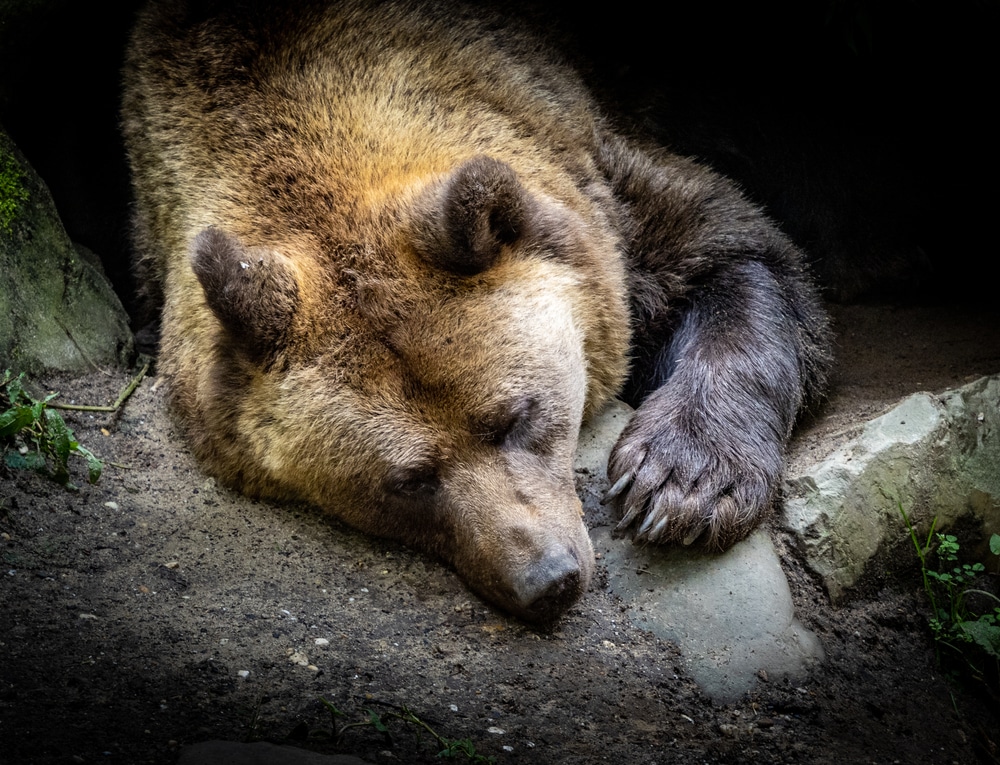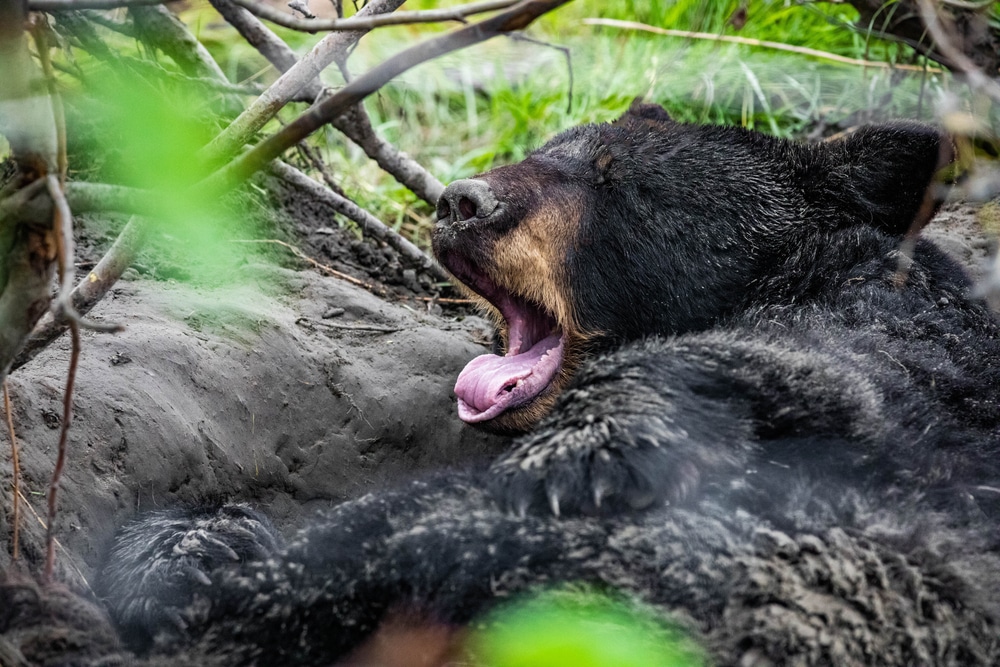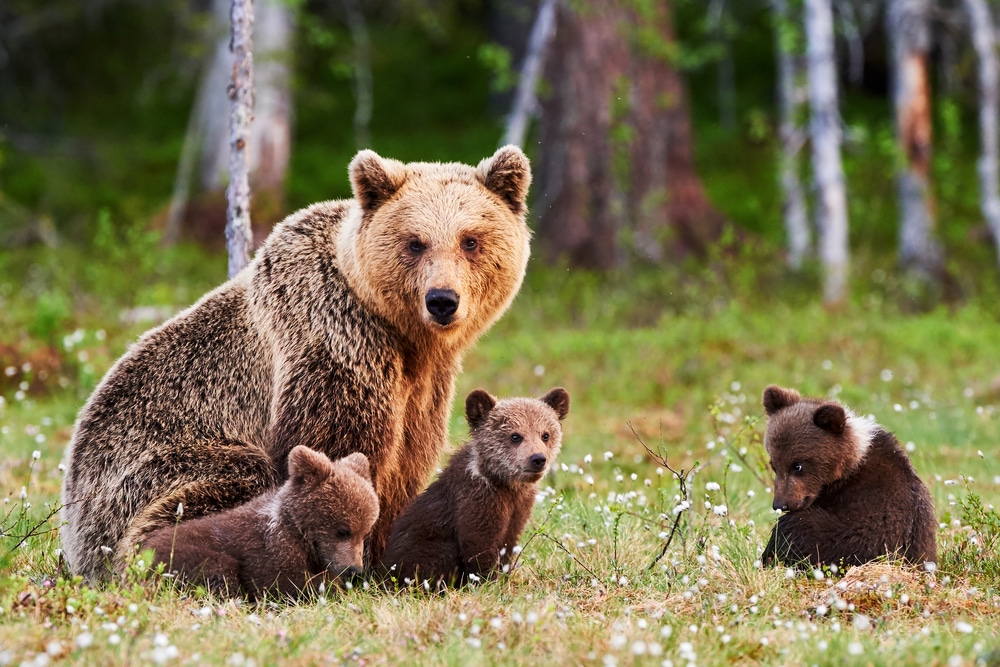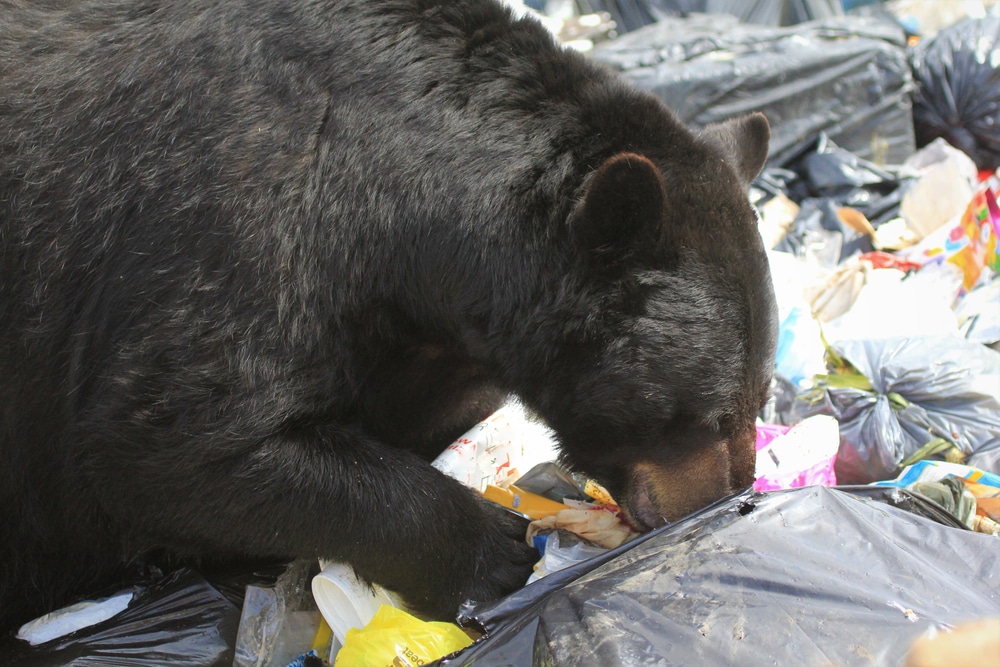

Bear behavior is driven by seasonal changes, especially with respect to giving birth, mating, and food availability. From dormant periods of hibernation to active periods filled with vitality, this article will shed light on bears’ annual life cycle. We’ll explore the nuances of bear rituals and how these play a critical part in their survival and health. We'll also look at the impacts of environmental changes on these rituals and the importance of preserving natural habitats.
Bears hibernate during winter months to conserve energy. But before they hibernate, bears undergo a period of hyperphagia (an intense and excessive eating phase).
During this time, usually in late summer and early fall, bears actively forage for various foods to build up fat reserves. They focus on high-calorie foods like berries, nuts, fish, and other sources of protein and fats.
The goal is to accumulate enough body fat to sustain their nutritional needs through the entire hibernation period, lasting anywhere from 2 to 7 months, depending on the weather. During hyperphagia, bears may gain substantial weight, doubling or even tripling their body fat percentage.
But this fat can make it hard for bears to stay cool in the August heat. So they slow down and spend most of their time resting in the shade, lying in cool water, or swimming. The combination of heat and huge meals makes spotting bears lying spread-eagled a common occurrence.
September is especially critical for pregnant bears as it represents the last chance to fatten up before hibernation. Pregnant females may eat as much as 90 pounds of food every day. They must eat as much as possible to keep their pregnancy. If they don't gain weight that allows them to safely start hibernating by November, the fertilized egg won't implant.
Bears also use this time to select a suitable den for hibernation. The den can be anything from a hollowed-out tree or dug-out depression in the ground to a rock crevice or cave. Pregnant female bears may choose a den with additional considerations for giving birth and protecting their cubs.
While some bears hibernate in natural shelters, others may enhance their den sites. They may gather leaves, twigs, and other materials to create a more insulated and comfortable space. The den protects the bear from the harsh winter elements and helps maintain a stable temperature. Juvenile and adult bears sleep alone, while mother bears and their cubs snuggle up for additional warmth.
Bears become more active as the days grow colder, and hibernation draws near. The young and old get more playful and participate in fun yet intense wrestling matches that can go on for hours. Toward November, they start moving toward their denning area.
Once in the den, bears become relatively immobile. They may wake up occasionally during the winter months but only to adjust their position, expel waste, or, in the case of pregnant females, give birth and care for their cubs. Bears retreat to their dens mainly because they can't find food to survive during winter. That explains why bears in areas with food sources practice a "walking hibernation," where they experience a metabolic rate reduction but continue to move to search for food.
Bears are masters of controlling their vitals. They achieve a significant decrease in their metabolic rate during hibernation, dropping to as low as 5% of their normal baseline. This reduction conserves energy, allowing them to survive on their stored fat reserves for months.
Their heart rate slows dramatically, sometimes reaching as low as 10 beats per minute compared to their usual 40-50 beats per minute. Body temperature also drops, but not as drastically as in other hibernating mammals, maintaining a range of around 35-40 degrees Celsius.
Breathing becomes shallow and infrequent, with some bears taking only 4-10 breaths per minute during hibernation. This minimized respiration reduces oxygen consumption and heat loss.
Bears suppress their urinary and digestive systems during hibernation, allowing them to recycle waste products and conserve water. They produce minimal urine and feces, often only releasing them upon emerging from hibernation.

Bears emerge from hibernation in early spring, having spent the winter months in reduced metabolic activity. This is a time of increased activity and exploration as they seek to replenish their energy reserves. It also marks the beginning of a new phase in the cubs' lives as they start to explore their surroundings under the watchful eye of their mother.
The mating season typically falls in the spring months of April to late June. The time varies slightly depending on the species and geographic location. This period is crucial for the continuation of the bear population, and it involves a series of mating rituals and interactions between male and female bears.
Before direct encounters, bears use scent markings to communicate their presence and reproductive status. They will leave scent markings on trees, rocks, and the ground to signal their availability for mating.
Male bears actively compete for the attention of receptive females. Females only mate every few years, which explains the fierce competition. The competition can involve vocalizations, posturing, and physical displays of strength to establish dominance and win the right to mate.
Once a dominant male has established his presence, courtship behaviors ensue. This typically involves a combination of vocalizations, body language, and physical interactions between the male and female.
The actual mating act occurs during this period. The pair may copulate multiple times, as the female's reproductive cycle often requires repeated mating to ensure fertilization. Females mate for the first time when they are between 6 and 8 years, and only have 5 litters in their life span.
After mating, the male and female bears typically go their separate ways. Unlike some species, bears are generally solitary animals and don't form long-term pair bonds.
Delayed implantation is a unique bear behavior. Although the fertilized egg undergoes initial development, it doesn't implant in the uterus immediately. Instead, it undergoes delayed implantation, allowing the female to time the birth of cubs to coincide with optimal conditions for their survival, such as when food resources are abundant. The gestation is typically around seven to eight months.

Bear cubs are typically born in winter while the mother is in hibernation. This period varies among different bear species. For example, black bear cubs are usually born in January or February, while polar bear cubs are born in December. Mother bears give birth to one to three cubs, with two being the most common.
At birth, bear cubs are tiny, hairless, and blind. They depend entirely on their mother for warmth, nourishment, and protection. The mother's body heat and milk provide essential sustenance for the cubs' initial growth. Cubs stay close to their mother, nursing frequently during the denning period.
As weeks pass, the cubs grow fur, open their eyes, and become more mobile. The mother's milk continues to support their development. During this time, the mother may occasionally leave the den to urinate or defecate, but she remains highly protective of her cubs.
Once outside the den, bear cubs engage in playful activities. They practice climbing, running, foraging, and socializing with the help of their mother. This learning process continues throughout the cubs' early years and is vital for their eventual independence.
Mother bear provides protection, guidance, and access to food until the cubs reach a level of maturity where they can fend for themselves. They also teach their cubs to identify nutritious sages, grasses, roots, and berries.
Bears follow special behaviors or rituals to help them survive and thrive in their environment. These rituals are essential for many reasons, including:

Things like habitat loss, climate change, and human encroachment can have negative environmental impact that threatens bear rituals and their overall well-being. These changes disrupt traditional foraging routes, alter denning conditions, and disrupt communication patterns, making it difficult for bears to adhere to their established rituals.
Preserving natural habitats is crucial for safeguarding bear populations and ensuring the continuation of their essential rituals. Protecting and restoring forests, wetlands, and other ecosystems provides bears with the space and resources they need to thrive.
Lions Tigers & Bears (LTB) provides a safe and nurturing environment for rescued bears, allowing them to express their natural behaviors and thrive in a setting that mimics their wild habitats. Our staff carefully monitors the bears' health and behavior, ensuring they receive the necessary care and support throughout the year, including during the crucial denning period.LTB also educates the public and strongly advocates for the well-being of bears. The goal is to raise awareness about the importance of bear rituals and the threats posed by environmental changes. When you support us, you directly contribute to the conservation of bears. Your support helps provide bears with the care and resources they need to survive and thrive while promoting education and awareness about the importance of protecting their natural habitats.

Ph: 619.659.8078
Fx: 619.659.8841
[email protected]
24402 Martin Way, Alpine, CA 91901